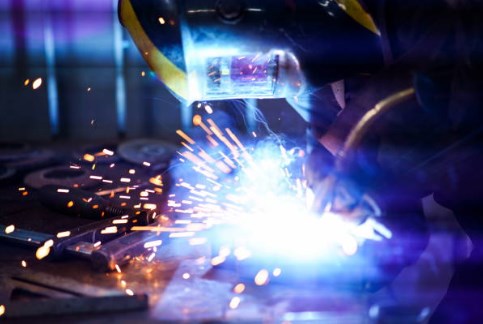Welding is a skill integral to numerous industries, but the process comes with potential health risks, primarily from welding fumes. These fumes contain various hazardous substances, raising concerns about the well-being of individuals exposed to them. In this article, we will explore the hazards of welding fumes, precautionary measures to protect yourself, and what to do if you find yourself hurt by welding fumes.

I. Hazards of Welding Fumes:
Welding fumes are a complex mixture of metallic oxides, gases, and particulate matter produced during the welding process. The composition of these fumes depends on the materials being welded, the welding method used, and environmental factors. The hazards associated with welding fumes include:
Respiratory Issues: Inhaling welding fumes can lead to respiratory problems such as shortness of breath, coughing, and wheezing. Long-term exposure may contribute to chronic conditions like bronchitis or even more severe respiratory disorders.
Metal Poisoning: Certain metals present in welding fumes, such as manganese, chromium, and nickel, can accumulate in the body over time, leading to metal poisoning. Symptoms may include nausea, dizziness, and neurological effects.
Eye and Skin Irritation: Welding fumes can cause irritation to the eyes and skin, leading to discomfort and potential long-term damage if not addressed promptly.
II. Precautionary Measures:
To safeguard yourself from the hazards of welding fumes, it's crucial to adopt a set of precautionary measures:
Ventilation is Key: Work in well-ventilated areas, preferably outdoors or in spaces equipped with effective ventilation systems. Adequate ventilation helps disperse fumes and reduces the concentration of harmful substances in the air.
Local Exhaust Ventilation (LEV): Use local exhaust ventilation systems, such as fume extraction hoods, to capture fumes at the source. This targeted approach minimizes exposure by removing contaminants directly from the working area.
Personal Protective Equipment (PPE): Wear appropriate PPE, including a respirator with a proper filtration system designed for welding applications. Additionally, use flame-resistant clothing, gloves, and goggles to protect your skin and eyes from sparks and splatter.
Choose Wisely: Opt for welding methods and materials that generate fewer fumes. Gas metal arc welding (GMAW) produces fewer fumes than shielded metal arc welding (SMAW), for example. Select low-emission materials whenever possible.
Safe Welding Practices: Adhere to proper welding techniques to minimize fume production. Maintain a consistent arc length, use correct welding parameters, and avoid overheating, which can increase the emission of harmful substances.
Regular Breaks and Rotation: Take regular breaks to limit continuous exposure to welding fumes. If possible, rotate tasks to reduce the duration of exposure and allow your body to recover.
III. What to Do if Hurt by Welding Fumes:
If you suspect that you've been adversely affected by welding fumes, take the following steps:
Seek Fresh Air: Move to a well-ventilated area to reduce further exposure to welding fumes.
Remove Contaminated Clothing: If your clothing is contaminated, remove it promptly to minimize skin exposure.
Seek Medical Attention: If you experience symptoms such as difficulty breathing, chest pain, or persistent coughing, seek immediate medical attention. Provide your healthcare professional with details about the materials you were welding and the duration of exposure.
Report the Incident: Inform your supervisor or employer about the incident. Reporting ensures that appropriate measures are taken to address the root cause and prevent future occurrences.
Follow Medical Advice: Adhere to the guidance provided by healthcare professionals for treatment and follow-up care. Be vigilant about any potential long-term health effects and attend regular check-ups.
IV. Conclusion
In conclusion, protecting yourself from welding fumes involves a combination of preventive measures and prompt action if exposure occurs. By understanding the hazards, adopting precautionary measures, and knowing what to do in the event of exposure, you can promote a safer and healthier welding environment. Remember, prioritizing your well-being is essential for a long and successful welding career.
Related articles:
1. Controlling Hazardous Fume and Gases during Welding
2. Shielding Gases for TIG & MIG Welding: which gas is best?
3. Choosing the Right Shielding Gases for Arc Welding
4. Which Shielding Gas Should You Use for MIG/MAG Welding?
5. What Are the Hazards from Gases During Welding and Cutting?




